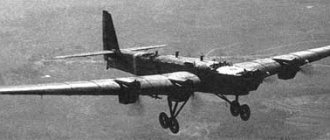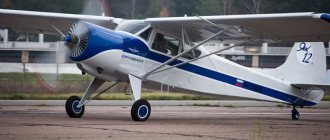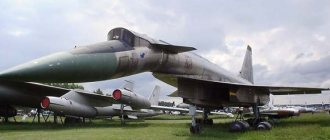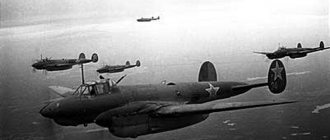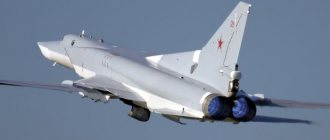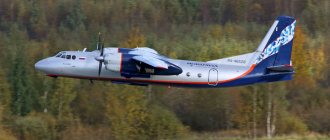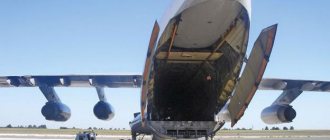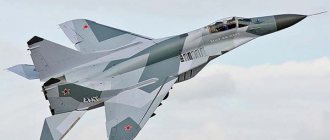Tactics
The SU-5 is not much different from most other self-propelled guns - in principle, the basics of combat are still the same. But there is one point that is worth considering when playing on this vehicle - it is a very small ammunition load (only 14 shells). With continuous shooting, you will run out of shells in the 4th minute of the battle, and this is not a very good prospect, considering that on average the battle lasts 7-8 minutes. Therefore, each of your shots at the enemy should be, if not with 100% confidence, then something like that. Ideally, you need to shoot at a “dead” enemy tank. On the one hand, this is a problem, but on the other hand, this self-propelled gun will prepare you for playing with high-level vehicles, which require no less confident and precise shooting, and a reload of 30-40 seconds at levels 8-10 simply does not forgive mistakes. Of course, do not forget to move to a safe place at the first danger. It is safe to say that if you master the shooting technique of the SU-5, you can be sure that the “top” equipment will bring you even more pleasure from playing it.
Self-propelled artillery unit SU-5
The need for the creation and development of self-propelled artillery was determined by the views of Soviet military science of the 1930s. Their essence boiled down to the fact that in order to conduct successful combat operations, tank and mechanized formations of the Red Army may require increased firepower. Since towed artillery is significantly inferior in mobility to tanks, self-propelled artillery was supposed to enhance the firepower of the units. In accordance with these views, the USSR began to create small, light and heavy self-propelled guns. Self-propelled guns, designated SU-5, were part of the so-called “small triplex”. This term referred to self-propelled guns of incomplete armor, created on the basis of the T-26 light tank and representing a universal self-propelled carriage, on the basis of which 3 guns could be placed: SU-5-1 - 76-mm divisional gun mod. 1902/30, SU-5-2 – 122 mm howitzer mod. 1910/30, SU-5-3 – 152-mm divisional mortar mod. 1931. According to the theory widespread at that time, the presence of this triplex could fully cover the entire existing range of army tasks at the divisional level. The design bureau of the Experimental Mechanical Engineering Plant named after. was responsible for the development of all three systems. Kirov (plant No. 185) under the leadership of P. N. Syachentov and S. A. Ginzburg. V. Moskvin was appointed the responsible designer of this project.
Design Features
The T-26 mod light tank was chosen as the base chassis for the self-propelled guns. 1933, the production of which was established in Leningrad. Due to the fact that the existing tank layout was completely unsuitable for self-propelled guns, the T-26 hull was significantly redesigned.
SU-5-1
The control compartment, along with the controls of the self-propelled guns, the driver's seat, as well as the transmission elements remained in their place in the nose of the car. But the engine compartment had to be moved to the center of the hull, separating it from the rest of the self-propelled gun compartments with armored partitions. The engine compartment was equipped with a standard gasoline engine from a T-26 tank with a power of 90 hp, a main clutch, a shortened driveshaft, a radiator, a fan, oil and fuel tanks, which were separated by sealed partitions. The engine compartment of the SU-5 self-propelled gun was connected using a special pocket with side openings that served to exhaust cooling air. On the roof of the engine compartment there were 2 hatches for access to the spark plugs, carburetor, valves and oil filter, as well as openings with armored shutters that served as an entrance for cooling air.
The fighting compartment was located at the rear of the vehicle. Here, behind a 15-mm armor shield, there were self-propelled gun weapons and places for crew (4 people). To dampen recoil during firing, a special coulter located at the rear of the vehicle was lowered to the ground. In addition, additional side stops could be used.
The chassis has not undergone any changes compared to the production T-26 tank. For each side, it consisted of the following components: 8 road wheels, which were assembled into 4 bogies (the first and second/third and fourth bogies had a common suspension with shock absorption on leaf springs), 4 support rollers. The steering wheel is rear, the driving wheel is front.
SU-5-2
All three self-propelled guns had a single chassis and differed mainly in the weapons used:
1. The main armament of the SU-5-1 self-propelled gun was a 76.2-mm divisional gun mod. 1902/30 (barrel length 30 caliber). The initial projectile speed is 338 m/s. Vertical gun pointing angles ranged from -5 to +60 degrees, horizontal angles in the 30-degree sector, without rotating the installation body. When firing, the crew used a telescopic sight and a Hertz panorama. The maximum firing range was 8,760 meters with a gun elevation angle of 40 degrees. The gun's rate of fire was 12 rounds per minute. Shooting was carried out from a place without the use of openers with the loader's pole lowered. The transportable ammunition of the self-propelled gun consisted of 8 rounds.
2. The main armament of the SU-5-2 self-propelled gun was a 122-mm howitzer model 1910/30. (barrel length 12.8 caliber), which featured a modified cradle design. The initial velocity of the projectile was 335.3 m/s. Pointing angles in the vertical plane ranged from 0 to +60 degrees, horizontally - 30 degrees without rotating the installation body. When firing, the crew used a telescopic sight and a Hertz panorama. The maximum firing range was 7,680 m. The use of a piston bolt ensured a decent rate of fire at the level of 5-6 rounds per minute. Shooting was carried out from a place without the use of openers with the loader's pole lowered. The carried ammunition consisted of 4 projectiles and 6 charges.
3. The main armament of the SU-5-3 self-propelled gun was a 152.4-mm divisional mortar mod. 1931 (barrel length 9.3 caliber). The initial velocity of the projectile is 250 m/s. Pointing angles in the vertical plane ranged from 0 to +72 degrees, pointing angles in the horizontal plane - 12 degrees without rotating the installation body. When firing, the crew used the Hertz panorama. The maximum firing range was 5,285 meters. The use of a wedge bolt ensured a rate of fire of 4-5 rounds per minute at elevation angles of up to 30 degrees and 1-1.5 shots at elevation angles above 30 degrees. The carried ammunition consisted of 4 rounds. When firing, 2 openers were used, which were installed outside the rear of the self-propelled gun.
To transport ammunition to the SU-5 self-propelled gun on the battlefield, it was planned to use a special armored ammunition carrier.
SU-5-3
The combat weight of the SU-5 self-propelled gun ranged from 10.2 to 10.5 tons, depending on modifications. The crew of the self-propelled gun consisted of 5 people (driver and 4 crew members). The capacity of the fuel tanks with a volume of 182 liters was enough to travel 170 km. marching along the highway.
The fate of the project
Factory tests of all three triplex vehicles took place from October 1 to December 29, 1935. In total, self-propelled guns covered: SU-5-1 - 296 km, SU-5-2 - 206 km, SU-5-3 - 189 km, while the last one was sent to the parade in the capital on November 1, 1935. In addition to the vehicle's mileage, the SU-5-1 and SU-5-2 self-propelled guns fired 50 rounds each, and the SU-5-3 self-propelled gun fired 23 shots.
Based on the results of the tests, the following conclusions were made: “The self-propelled guns are distinguished by tactical mobility, which allows them to move on and off roads, the transition to a combat position for the 76 and 122 mm SU-5 is instantaneous, for the 152 mm version it requires 2-3 minutes (since shooting involves the use of rests). During the tests, shortcomings of the machine were also identified, which included: insufficient strength of the bracket that connected the cradle with the axle holder, as well as weak tires of the support wheels. All identified defects were not of fundamental importance and were easily eliminated.
According to plans in 1936, it was planned to produce a batch of 30 SU-5 self-propelled guns. Moreover, the military preferred the SU-5-2 version with a 122 mm howitzer. They abandoned the SU-5-1 in favor of the AT-1 artillery tank, and for a 152-mm mortar the SU-5-3 chassis was quite weak. The first 10 production vehicles were ready by the summer of 1936. Two of them were almost immediately sent to the 7th Mechanized Corps to undergo military trials, which lasted from June 25 to July 20, 1936 and took place in the Luga area. During testing, the vehicles traveled 988 and 1014 km under their own power. respectively, firing 100 shots each.
Based on the results of military tests, it was established that the SU-5-2 self-propelled guns passed military tests. The SU-5-2 were quite mobile and durable during the campaign, possessing sufficient maneuverability and good stability when firing. As a rule, self-propelled guns were used to fire from open positions, acting as escort artillery. When a number of additions are made to their design, it is advisable to adopt these self-propelled guns into service with mechanized formations as a means of direct artillery support.
The main identified shortcomings of the vehicle included: insufficient ammunition, it was proposed to increase it to 10 shells. It was also proposed to increase engine power, since the self-propelled gun was overloaded, and to strengthen the springs. It was proposed to move the muffler to another location, and equip the control compartment with a fan.
Some of these complaints from the military were eliminated during the production of the remaining 20 self-propelled guns, but it was not possible to increase engine power and strengthen the suspension. A number of the last vehicles, which were produced in the fall of 1936, also received additional armor plates that covered the sides of the gun crew seats. It was proposed to make changes to the design of the SU-5 self-propelled guns based on the results of military tests, and then launch their mass production, but instead, in 1937, work on the “small triplex” program was completely curtailed. Perhaps this was connected with the arrest of one of the designers P. N. Syachentov.
Already produced self-propelled guns from the first batch entered service with mechanized corps and separate brigades of the Red Army. In the summer of 1938, these vehicles even took part in hostilities against the Japanese at Lake Khasan. SU-5 operated in the area of Bezymyannaya and Zaozernaya heights as part of artillery batteries from the 2nd mechanized brigade of the Special Far Eastern Army. Due to the short duration of the hostilities, which ended on August 11, 1938, the use of self-propelled guns was very limited. Despite this, the reporting documents indicated that the self-propelled guns provided significant support to the infantry and tanks.
In September 1939, during the “liberation” campaign in Western Belarus and Ukraine, the SU-5 battery, which was part of the 32nd Tank Brigade, made a 350-km march, but did not participate in military clashes with Polish troops. After this march, one unit was sent to the plant for overhaul.
As of June 1, 1941, the Red Army had 28 SU-5 self-propelled guns: 8 in the Western Special Military District and 9 in the Kiev Special Military District, 11 on the Far Eastern Front. Of these, only 16 vehicles were operational. No information has yet been found on the use of these self-propelled guns in the Great Patriotic War. All of them were most likely abandoned due to malfunctions or lost in the first week of fighting.
Performance characteristics: SU-5-2
Weight: 10.5 tons. Dimensions: Length 4.84 m, width 2.44 m, height 2.56 m. Crew: 5 people. Reservation: from 6 to 15 mm. Armament: 122-mm howitzer model 1910/30 Ammunition: up to 10 rounds Engine: in-line 4-cylinder air-cooled carburetor from the T-26 tank with a power of 90 hp. Maximum speed: on the highway – 30 km/h Cruising range: on the highway – 170 km.
Crew Perks
I think that it won’t work for this because the car is passable and won’t stay in the hangar for a long time, the experience numbers are not the same... But still
Commander
- Sixth Sense
- The Brotherhood of War
- Disguise
Gunner
- Disguise
- The Brotherhood of War
- Smooth rotation of the tower
Driver mechanic
- Disguise
- The Brotherhood of War
- Virtuoso
Charging
- Disguise
- The Brotherhood of War
- Optional
Charging
- Disguise
- The Brotherhood of War
- Optional
Our core skills are camouflage and military brotherhood. For the commander, the first perk is the sixth sense (it will notify us of the light). The third for the gunner is a smooth rotation of the turret (it will reduce our spread), and for the mechanical water - a virtuoso. Further pumping depends on your preferences.
